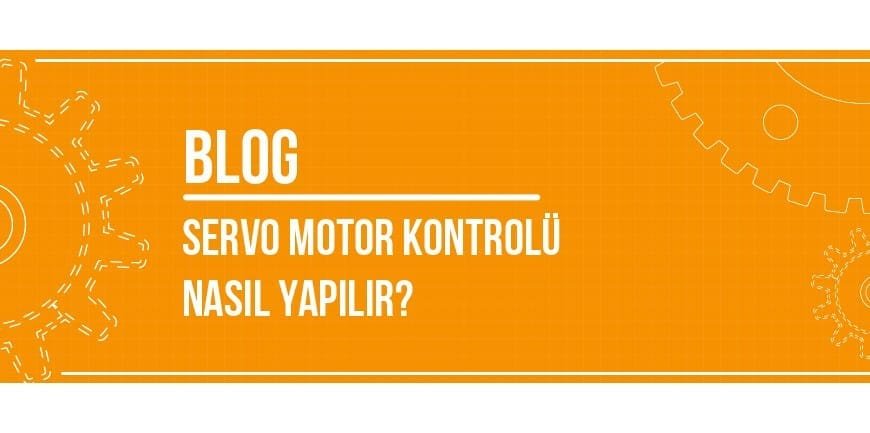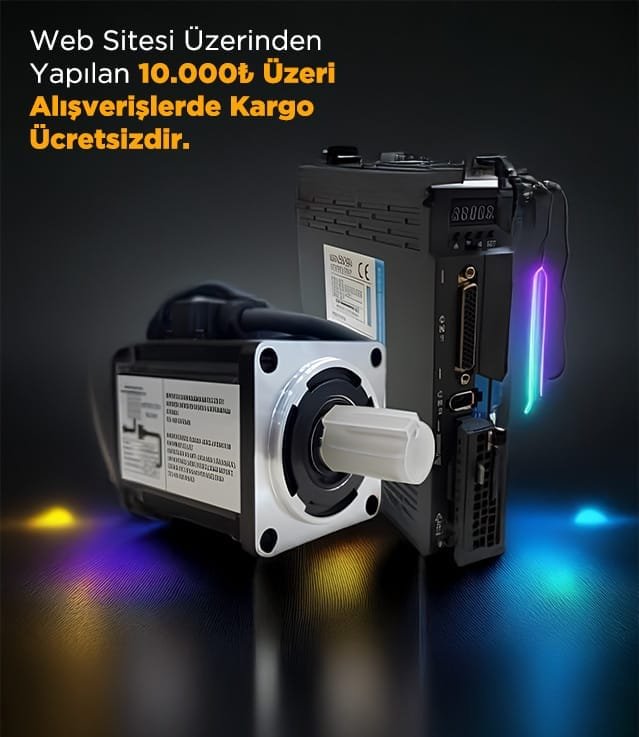
İçindekiler
What is TTR Cable and Why is it Preferred in Servo Motor Connections?
TTR cable is a cable type that is frequently preferred in industrial applications thanks to its flexible structure, safe transmission and wide usage areas. It is widely used especially in systems where moving connections are required. In dynamic systems such as servo motor connections, the flexibility and durability of the cable is of great importance. Therefore, TTR cables stand out in such applications.
Servo motors are systems that require high precision and continuous motion. In automation systems working with these motors, the cable’s resistance to bending and external factors is as important as its conductivity quality. TTR cable meets such requirements, making it a preferred choice for servo motor connections.
What is TTR Cable?
TTR cable is a double insulated, stranded and usually PVC insulated electrical cable. Copper wires are generally used as conductors and are suitable for various electrical connections both indoors and outdoors. Thanks to its flexible structure, it can also be used safely in non-fixed, moving connections.
This type of cable is especially preferred in low and medium voltage applications such as 300/500V. Thanks to its double insulation structure, it both protects the conductor and provides resistance against external physical damage. With these features, it offers both safe and long-lasting use.
What is TTR Cable Used For?
TTR cables are used in domestic electrical installations, small household appliances, industrial machinery and automation systems. They are also widely preferred as supply cables for plug-in devices. Thanks to its flexible structure, it is easy to install and can be easily laid in narrow spaces.
In industrial applications, especially in systems with moving parts, the cable must be resistant to continuous bending. For this reason, TTR cables play an important role in robotic arms, automatic machines and servo motor connections. In such applications, the mechanical strength of the cable is as important as its conductivity.
What are the Types of TTR Cables?
TTR cables are generally diversified according to the number of conductors and cross-sectional area. It responds to user needs with different variations such as 2×1.5 mm², 3×2.5 mm² or 4×1.5 mm². In addition, the insulation material and outer sheath thickness of the cable also cause different models.
Some TTR cables are manufactured to be more resistant to outdoor conditions. Models with UV resistance or protection against oils are more suitable for industrial applications. Thanks to this diversity, users can choose the right TTR cable according to the specifications their system needs.
Where is TTR Cable Used?
TTR cables are widely used in home, office, industry and agriculture. Lighting systems, small motors, socket connections and portable devices are the most preferred areas of this cable type. Thanks to its ease of installation and flexible structure, it provides advantages in the rapid installation of various systems.
Servo motors are indispensable parts of automation systems and require flexible and reliable cabling as they are in constant motion. TTR cables are used in servo motor connections to meet this need. TTR cables show high performance especially in small and medium power servo motors.
What is the Difference between TTR and NYY Cable?
TTR cable is a flexible multi-wire cable type and is mostly used for indoor applications. NYY cable, on the other hand, is generally single stranded, rigid and suitable for harsher conditions such as outdoors and underground. The environment and application area of both cables are different.
In servo motor systems, TTR cables are preferred for moving connections, while NYY cables are used for fixed and outdoor connections. While NYY cables offer higher mechanical protection, TTR cables provide the advantage of higher flexibility. This difference shapes the cable selection according to the application purpose.
Which Cable Types Are Used in Servo Motors?
In servo motors, various cable types are used for the correct transmission of signal, power and control lines. Apart from servo cables specially designed for these motors, TTR, shielded cables and robot cables can also be used. The type of cable selected directly affects the safe and efficient operation of the system.
Flexible power cables such as TTR cables are preferred for power transmission, while shielded cables are used to prevent signal interference. In motion applications, robot cables stand out thanks to their vibration and continuous bending resistant structures. It is important that all these cables work in harmony to maintain the precision of the servo motor.
The Role of TTR Cable in Servo Motor Connections
TTR cables provide power transmission between the servo motor and the control unit. Especially in low and medium power servo systems, it safely transmits the current required by the motor. In this process, the insulation quality is as important as the conductor structure of the cable.
Servo motors are often in motion and cables need to withstand constant bending. TTR cable can withstand such mechanical challenges thanks to its multi-stranded flexible structure. This ensures long life of the connections and minimizes the risk of failure in the system.
Why TTR Cable is a Suitable Choice for Servo Motor?
In servo motor systems, both the electrical and mechanical performance of the cable is critical. TTR cable provides both strong current transmission and supports the movement of the motor thanks to its high flexibility. This is a great advantage, especially in tight spaces or in systems where the cable is moving.
The double insulation structure of the TTR cable increases electrical safety and provides protection against impacts and friction from the external environment. With these features, TTR cable is a highly suitable choice for high performance systems such as servo motors.
What are the Advantages of Using TTR Cable in Servo Motors?
The use of TTR cables in servo motors offers many technical advantages. Firstly, their flexible structure simplifies the installation process and shortens cable laying times. In addition, in moving systems, the cable is resistant to bending, ensuring a longer-lasting connection.
Secondly, TTR cables are cost-effective and widely available. While providing high performance especially in low power servo motor applications, it does not strain the budget. This makes it preferred in both small and large scale automation projects.
Effect of Different TTR Cable Cross Sections on Servo Motor Performance
The cross-sectional area of the TTR cable determines the maximum current that can pass through it. The correct cross-section cable should be selected according to the power required by the servo motor. For example, if the motor draws high current, a thin-section cable may heat up and reduce performance. Therefore, choosing the appropriate cross-section is critical for system efficiency.
In addition, thick section TTR cables provide energy transmission with lower resistance. This contributes to more stable motor operation. However, the flexibility of thick cables may be reduced, so the route and system design of the cable should also be considered.
Sectors where TTR Cable is used in Servo Motor Applications
Servo motors play critical roles in industries where automation is used extensively. In this context, TTR cables are used in many sectors from automotive production lines to packaging machines, textile machines to CNC machines. The dynamic motion needs in these systems are successfully met with the flexible structure of TTR cable.
In addition, the combination of servo motor and TTR cable is quite common in white goods production, food processing machines and electronic assembly lines. In these sectors, both energy efficiency and safety are at the forefront. TTR cable meets these expectations and offers stable performance in production lines.
Diğer Blog Yazılarımız








